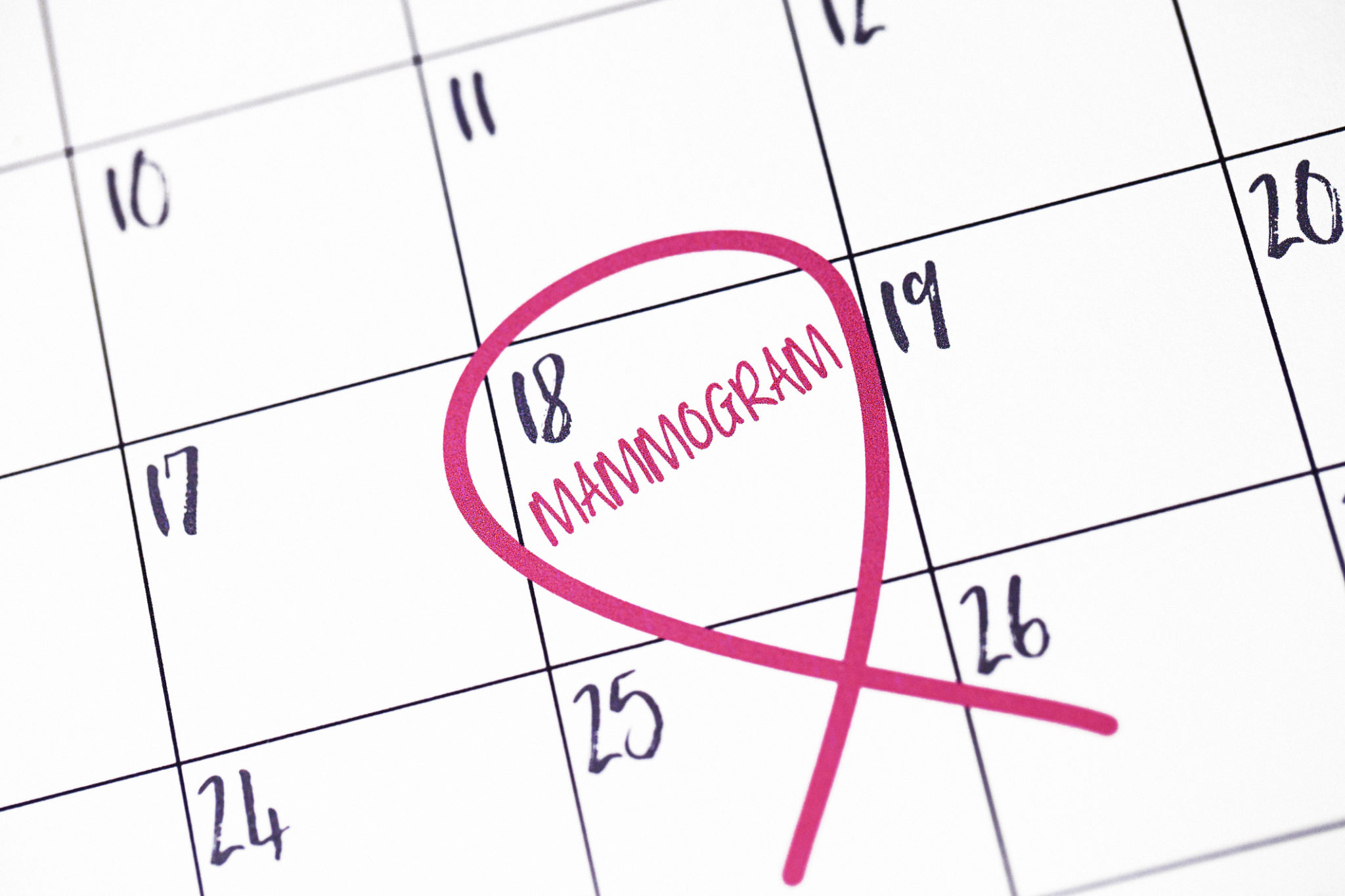14-year-old Survives Serious Sledding Accident
FEB 05, 2014Sledding accidents land about 20,000 children in the emergency department each year. Researchers found those ages 10 to 14 were ...
Read More"God Put Me in Their Hands"
As she lay in her crumpled Toyota Siena van, all Traci Wickham could think about was her kids.
A semi-trailer truck had just run a red light and T-boned her van on the driver's side. Her pelvis was crushed and although she didn't know it yet, one side had actually broken off inside of her. The pain was unbearable. But she was worried that her three children had been hurt.
She didn't realize she'd already dropped them off at school. A pharmaceutical rep, Traci was heading to Grand Island from Columbus for work. The semi barreled through the intersection at the junction of U.S. Highways 81 and 30; the impact of the crash carried her van 94 feet. "That's almost the length of a football field," Traci says. "It carried me across the road and over the median. But I don't remember the semi hitting me."
Two witnesses rushed to her side. One held her head until the ambulance came, and insisted she not move her neck. He also kept her from squeezing out of her seatbelt and reassured her, "You're going to be okay. Slow your breathing down. Don't move." Traffic was backed up for a mile and the highway was closed for an hour.
A squad rushed her to the Columbus hospital, where friends had gathered. "You gotta fight, Traci. You gotta fight hard!" they cried to her. The LifeNet helicopter was enroute to fly her to Creighton University Medical Center. It was during that 30 minute flight that Traci realized she was fighting for her life. "I was very, very scared. I didn't think it was that bad until they told me, ‘You're going on the helicopter.' I needed a lot of blood. The side airbags stopped all the glass from coming in but my diaphragm had a big hole in it. All my organs had been pushed up and were coming up into my chest. I knew I had to fight to stay alive."
The CUMC trauma team was activated. Although Traci doesn't remember arriving at CUMC, she does recall what happened next. She tears up when she talks about the team. "It was a huge team effort. They were 100 percent in it. I am so glad I was there. God put me in their hands."
From the trauma bay, Traci was rushed to the operating room where doctors focused on her most urgent injury—her ruptured diaphragm. Pradeep Pallati, M.D., was the trauma surgeon on call who fought to save her: "It's one of the worst traumas I've seen, I would say." The team spent four to six hours trying to stabilize her and he remembers her blood pressure falling dramatically in the operating room ; he had to control the heavy bleeding. She'd lost so much blood Traci needed six units. When she'd been hit, the impact pushed in her abdomen and the immense pressure on the diaphragm caused it to burst. The hole was 10 centimeters long. Worse, says Dr. Pallati, the damaged diaphragm was forced up behind her heart. "We did have difficulty because it was a large hole and it was close to the heart. Her whole left side—including her large bowels and spleen--was up in her chest. Fortunately it all came nicely down. It was life-threatening. We had to act fast—open her belly, fix the diaphragm." He smiles. "It was gratifying to me to be able to save her."
Justin Siebler, M.D., an orthopedic traumatologist, followed with a second surgery: "Her hip socket was broken and the left side of her pelvis was disconnected from her spine," he says. He inserted a traction pin to temporarily keep her hip socket stable.
The first day in intensive care, intubation prevented her from speaking. So to communicate with worried 12-year-old Grace and 15-year-old Anna, Traci spelled out the words, ‘It hurts. I love you.' "Her trauma doctors assured her she would be okay and that the worst was over. But she still faced another long surgery—up to 10 hours.
"He (Dr. Siebler) was great at explaining it all. He was just very blunt as to how serious it was. My left leg had gone through my pelvis." Traci remembers Dr. Siebler showing her what the operation would involve by showing her a model of a pelvis. "I asked him, ‘How can you do this surgery?' He kind of laughed and told me, ‘This is what I do.'"
The surgery went well. Dr. Siebler used four plates, 15 screws and one large bolt to reattach the part of her pelvis that had broken off. Although the surgery was successful, he wanted her to be realistic about her recovery: "No one will ever be normal after this type of injury," he says. "I try to make sure I communicate that to patients. She may only be 95% of where she was before, maybe less after we put her back together."
Traci had the advantage of being in good health before the accident as well as a great family support group and strong motivation. "She was in good health with severe blood loss. Had she not been so healthy, her heart would not have coped with the acute trauma and would have given up," Dr. Pallati says.
After a few days at CUMC, Traci moved to another CHI Health facility - Immanuel Rehabilitation Center. "That got me up and moving. It got me out of bed. It really moved me along." The care was so good at Immanuel she says she didn't mind spending Christmas Eve and Christmas there with her family that drove in from Columbus. "It was awesome. I kept thinking, ‘I am here. I am alive. My family's together."
Traci was thrilled though when she could finally go home to her husband, children, family and friends. It wasn't until she returned home from rehab that it really sank in "how close" she had been to dying. "I bled out. But I had so many prayers from so many people—people all over. Honestly, if I didn't have them and my faith I don't know how I would have made it through."
Her recovery continues. She goes to physical therapy four to five days a week in Columbus and returns to Omaha for follow-up appointments with Immanuel Rehabilitation Center staff and her CUMC doctors. She reflects on her last x-ray: "You can see the pin across my back. You can see all the plates they put in to hold me together. They put me back together. I'm going to walk."
Today Traci can dress herself and stand up but her pelvis is still very sore and she has trouble sleeping. She needs a wheelchair or walker to get around. Flexibility and endurance are slowly returning. Her left leg is stronger and she has a greater range of motion when she moves it. "I was actually able to empty the dishwasher. And I was able to lie down on a regular bed and read a book to my six-year-old son!"
She's also getting her spunk back. One doctor told her it could be 18 months before her life is back to normal. "I'm going to fight him on that! I want to be out of this wheelchair. I'm going to fight it every step of the way. I can't sit around all the time or I'll go crazy!" Traci says defiantly.
Even though this recovery has been tough, Traci says it's not as hard as when she had a full-term stillbirth in 2005. She and her husband Sean named the baby Samuel. She wears a bracelet with his name on it. "Honestly, I think he (Samuel) was my angel the day of the accident," she says. "He was watching over me." She tears up and looks down at her wheelchair. "This is hard in a totally different way."
The accident happened at a busy intersection near her neighborhood and Traci has to pass it almost every day. It still bothers her to see it. "I have to believe God has a plan. I keep asking, ‘When is it going to get better?' I want to be able to sit down on the floor and play with Will (her six-year-old son). I just know I will—and soon." Then her large blue-green eyes sparkle as she repeats what a friend calls her: "the luckiest unlucky gal around!" Traci just wants to think of herself as lucky.

Sledding accidents land about 20,000 children in the emergency department each year. Researchers found those ages 10 to 14 were ...
Read More
Vira Brooks had three sons in high school. And she had newly-diagnosed breast cancer. "I remember hearing the words, ‘You have ...
Read More
When Carmen Campisi called to schedule her mammogram, she hadn't heard of the new 3-D technology, or tomosynthesis, at CHI ...
Read MoreWhen you need local health information from a trusted source, turn to the CHI Health Better You eNewsletter.